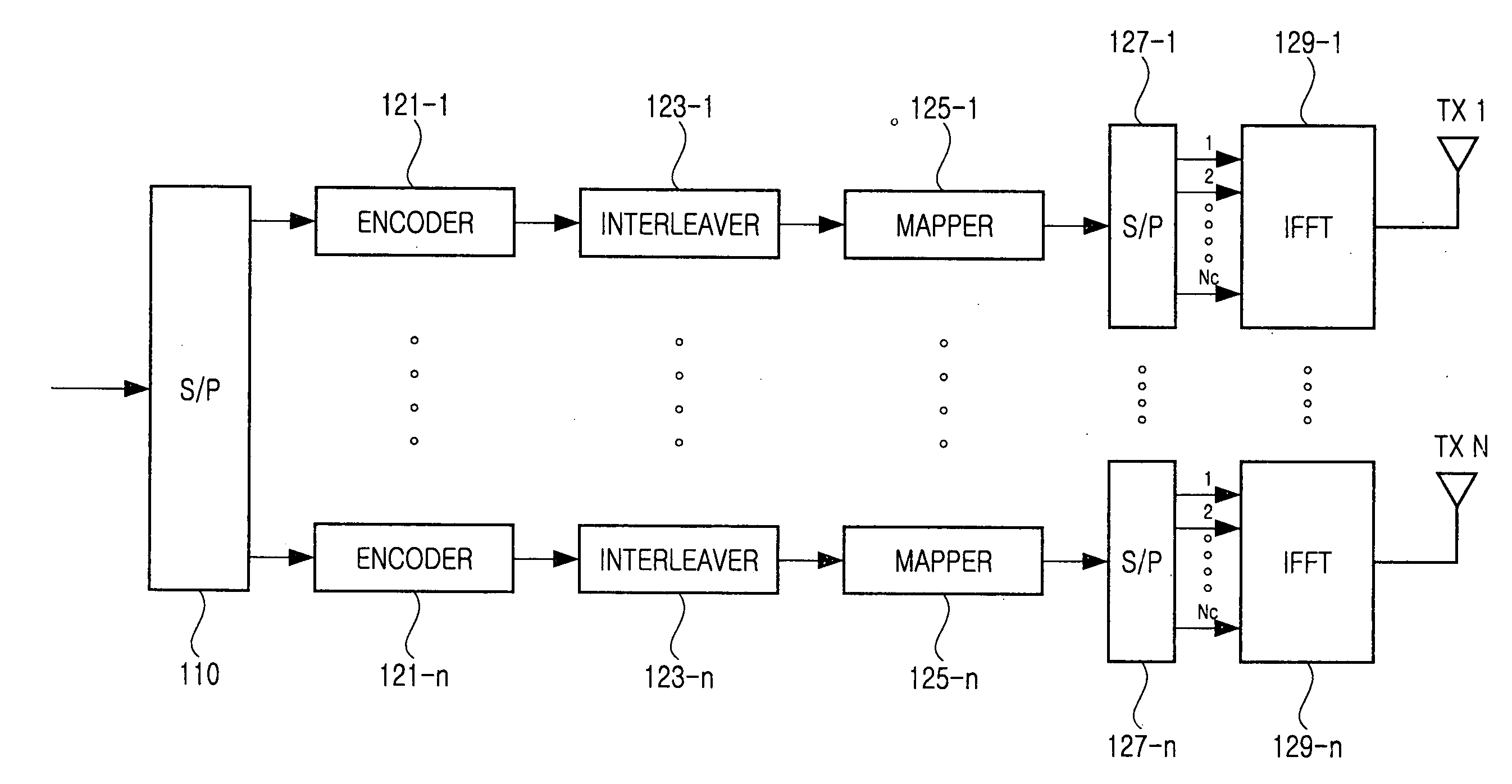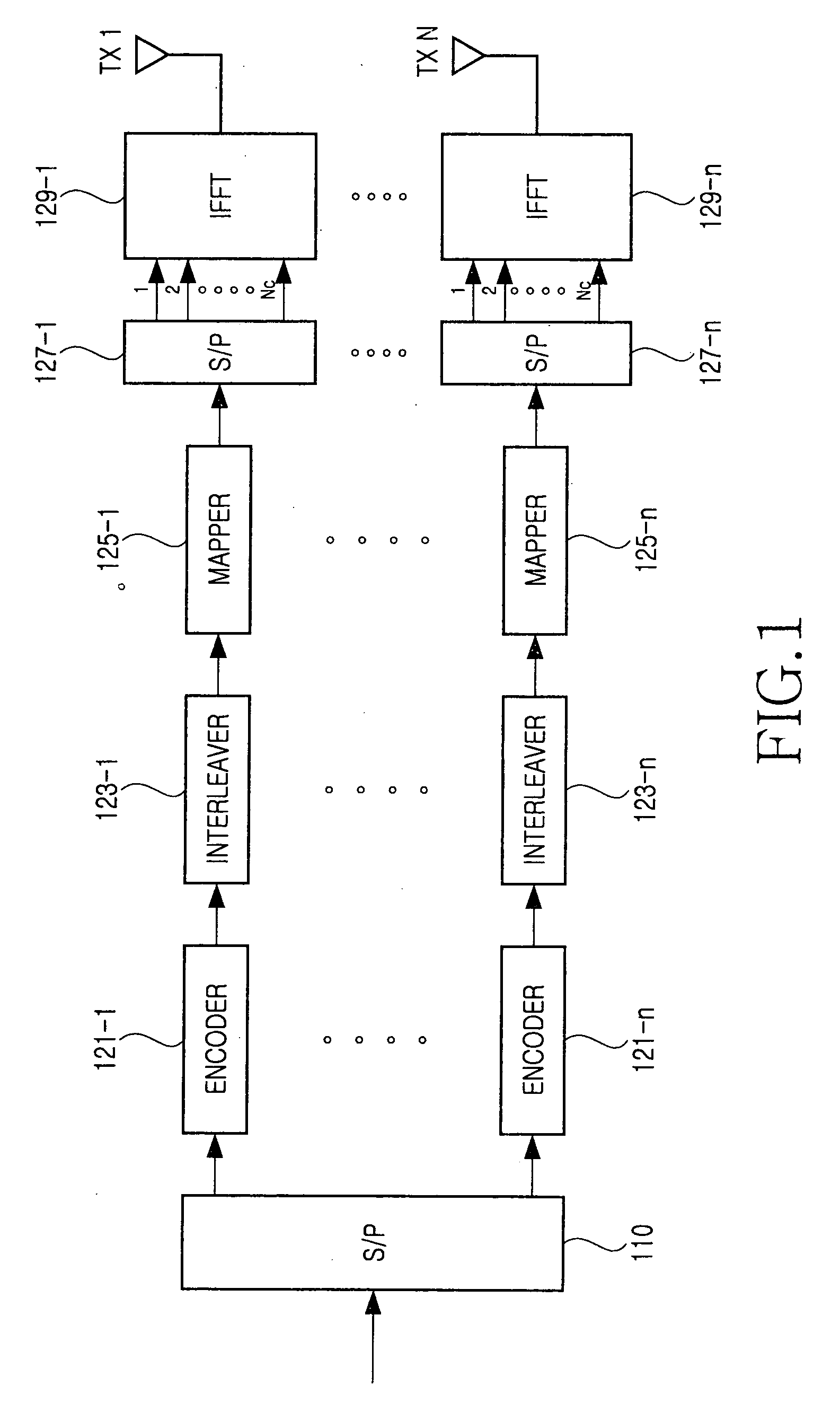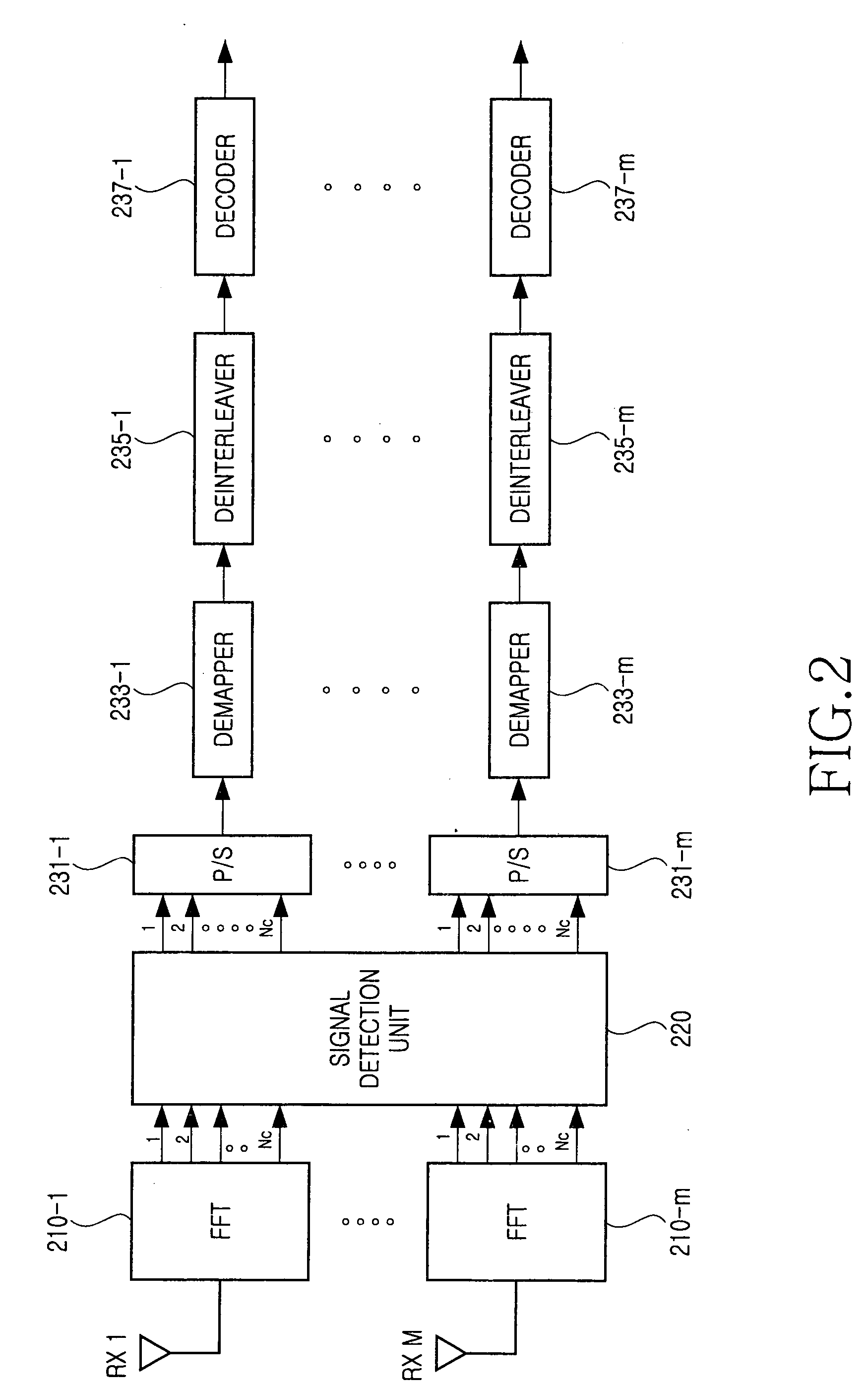Method for detecting and decoding a signal in a MIMO communication system
a communication system and signal detection technology, applied in the field of wireless communication systems, can solve the problems of low reliability of received signals, high processing complexity of equalization, and distortion degrading the detection accuracy of received symbols, so as to improve the reliability of received signals
- Summary
- Abstract
- Description
- Claims
- Application Information
AI Technical Summary
Benefits of technology
Problems solved by technology
Method used
Image
Examples
first embodiment
[0040]FIG. 2 illustrates a structure of a receiver of the coded layered space-time OFDM system to which the signal detection and decoding method of the present invention is applied in accordance with the present invention.
[0041] In FIG. 2, the OFDM receiver is provided with Fast Fourier Transform (FFT) processors 210-1˜210-m for performing FFT processes for signals received through MR receive antennas RX 1˜RX M, a signal detection unit 220 for processing parallel signals output from the FFT processors 210-1˜210-m and outputting parallel signal streams associated with the FFT processors 210-1˜210-m, and signal processing units for processing the parallel signal streams output from the signal detection unit 220 according to signals associated with the FFT processors 210-1˜210-m. The signal processing units are configured by Parallel-to-Serial (P / S) converters 231-1˜231-m for converting the parallel signals associated with the FFT processors 210-1˜210-m to serial symbol streams, demapp...
second embodiment
[0093]FIG. 4 illustrates a structure of a receiver of the coded layered space-time OFDM system to which the signal detection and decoding method is applied in accordance with the present invention.
[0094] In FIG. 4, an FFT processor (not illustrated), a signal detection unit 431, a P / S converter 433, a demapper 435, a deinterleaver 437, and a decoder 439 in the receiver in accordance with the second embodiment of the present invention have the same structures as those in the receiver of the first embodiment. The receiver of the second embodiment further includes a representative layer order decision unit 440 for deciding the layer order for an identical subchannel in output signals of the FFT processors and outputting a signal to the signal detection unit 431 in the decided order. The receiver of the second embodiment further includes a second encoder 441 for encoding an output signal of the decoder 439 through the same encoding scheme as that of an associated transmitter, a second i...
PUM
 Login to View More
Login to View More Abstract
Description
Claims
Application Information
 Login to View More
Login to View More - R&D
- Intellectual Property
- Life Sciences
- Materials
- Tech Scout
- Unparalleled Data Quality
- Higher Quality Content
- 60% Fewer Hallucinations
Browse by: Latest US Patents, China's latest patents, Technical Efficacy Thesaurus, Application Domain, Technology Topic, Popular Technical Reports.
© 2025 PatSnap. All rights reserved.Legal|Privacy policy|Modern Slavery Act Transparency Statement|Sitemap|About US| Contact US: help@patsnap.com



